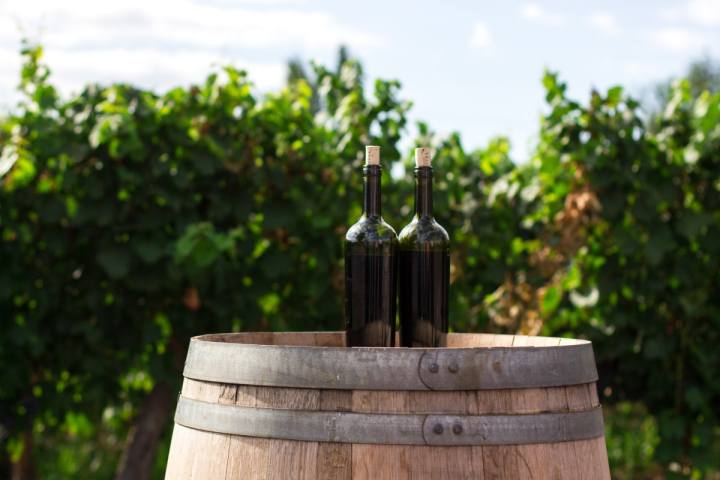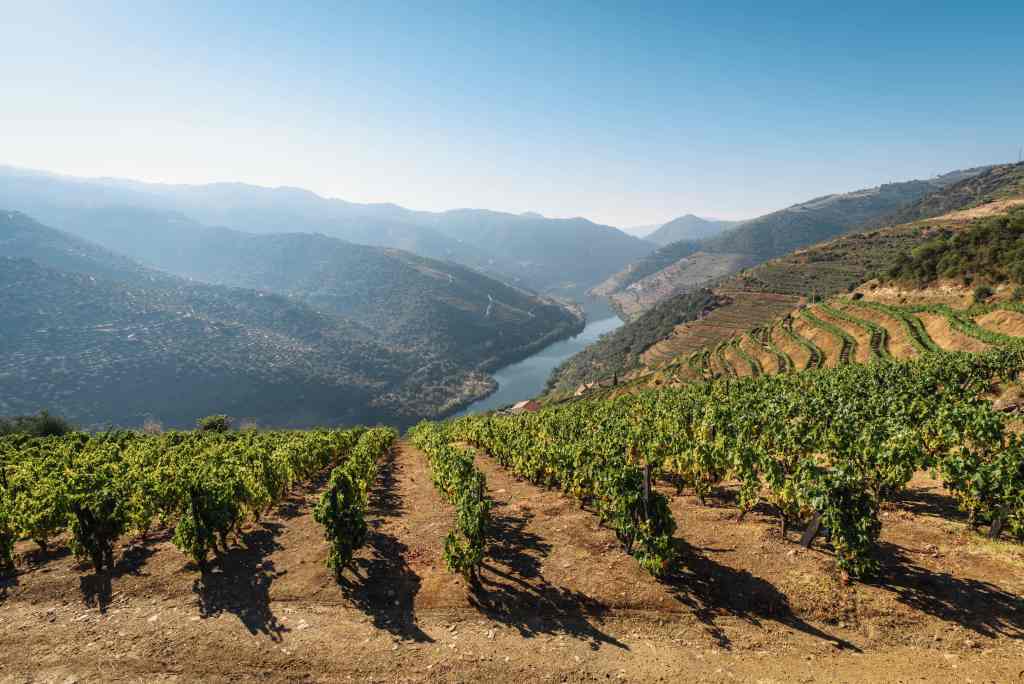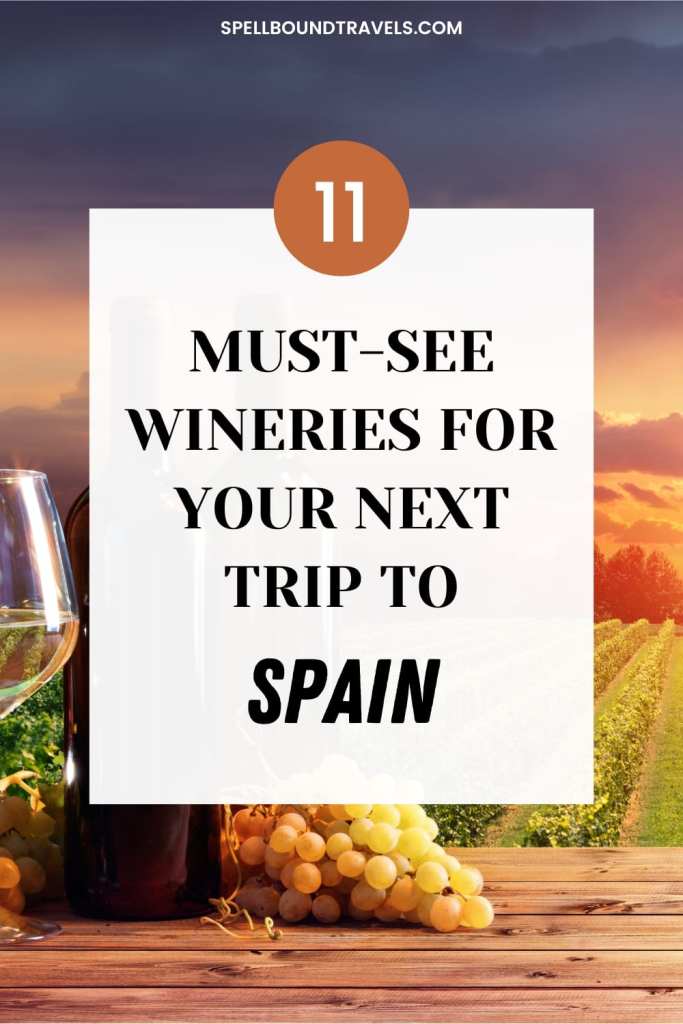
Spain has a long and rich history of winemaking, with vineyards dating back to the Roman Empire. Today, Spain is one of the world’s top wine-producing countries, known for its diverse grape varieties, unique winemaking techniques, and stunning vineyard landscapes. Whether you’re a wine enthusiast or simply looking to explore Spain’s vibrant culture, visiting some of the country’s top wineries is an absolute must. This post will take you on a journey through the best wineries in Spain, highlighting the unique features and notable wines of each.
From the bold and robust Rioja wines of northern Spain to the delicate and aromatic whites of Penedès, there’s something to satisfy every wine lover’s palate. So, grab a glass of your favourite Spanish wine and let’s dive into the fascinating world of Spanish winemaking!
Interested in Fine Wines Around the World?

Check out these other posts for inspo:
- Etna Wineries: 8 of the Best Wineries in Sicily
- 7 Best Stellenbosch Wineries and Vineyards to Visit
- Wineries in Crete: Guide to the 5 Best Wineries in Greece
- Ultimate Nova Scotia Winery Tour – Budget Friendly
Denominación de Origen
A DO, or Denominación de Origen, is a Spanish wine appellation system that guarantees the quality and origin of a wine. DOs are regulated by the government and must meet certain criteria in order to be awarded the designation. These criteria include the grape varieties that can be used, the minimum alcohol content, and the ageing requirements.
There are currently over 70 DOs in Spain, each with its own unique character and flavour profile. Some of the most famous DOs include Rioja, Ribera del Duero, Priorat, and Jerez.
The DO system is designed to protect the reputation of Spanish wines and to ensure that consumers are getting high-quality products. It is also a valuable marketing tool for Spanish wineries, as it allows them to distinguish their wines from those produced in other regions.
Here are some of the benefits of DO wines:
- Quality assurance: DO wines are subject to strict quality control standards, which ensure that they meet a certain level of quality.
- Terroir expression: The DO system allows winemakers to focus on the unique characteristics of the terroir in which their grapes are grown. This results in wines that are more expressive of their place of origin.
- Marketing: The DO system gives Spanish wines a competitive edge in the global market. Consumers are more likely to trust wines that have been awarded a DO designation.
If you are looking for a high-quality wine that is made with care and attention to detail, then a DO wine is a great option.
Overview of different wine regions

Rioja
Rioja is the most famous wine region in Spain and is known for its red wines made from Tempranillo grapes. The region is located in the north of Spain, in the autonomous community of La Rioja. The area is characterized by its rolling hills, which are covered in vineyards. The climate is continental, with hot summers and cold winters. The soils are a mix of clay and limestone, which provide good drainage and minerality to the wines. Rioja wines are typically full-bodied and well-structured, with red fruit, spice, and oak flavours.
Ribera del Duero
Ribera del Duero is another important wine region in Spain and is also known for its red wines made from Tempranillo grapes. The region is located in the north of Spain, in the autonomous community of Castilla y León. The area is characterized by its rugged terrain, which is home to a number of different grape varieties. The climate is continental, with hot summers and cold winters. The soils are a mix of clay and limestone, which provide good drainage and minerality to the wines. Ribera del Duero wines are typically even more full-bodied and tannic than Rioja wines, with flavours of black fruit, leather, and earth.
Jerez
Jerez is a wine region in the southwest of Spain, in the autonomous community of Andalusia. The area is characterized by its warm, dry climate and its unique soil, which is made up of albariza, a type of white chalk. The wines of Jerez are fortified, which means that they have had brandy added to them. This gives them a higher alcohol content and a longer shelf life. Perhaps Jerez’s most famous fortified wines, include Sherry. Sherry wines are made from a blend of white grapes, including Palomino, Pedro Ximénez, and Moscatel. They are typically aged in oak barrels and can be sweet or dry.
Catalonia
Catalonia is a wine region in the northeast of Spain and is home to a number of different wine appellations. The area is characterized by its diverse climate and its varied terrain. Catalonia’s red wines are made from various grape varieties, including Garnacha, Tempranillo, and Syrah. It is also known for its white wines made from Macabeo, Parellada, and Xarel·lo grapes.
Best wineries in Spain
Rioja
Marqués de Murrieta is one of the most famous wineries in Rioja and is known for its long history and its high-quality wines. The winery was founded in 1852 and is now run by the seventh generation of the family. Marqués de Murrieta’s wines are made from a blend of Tempranillo, Garnacha, and Mazuelo grapes, and are known for their elegant flavours and their long ageing potential.
Cost of tasting: A winery visit costs €40, and including wine tasting costs a little more.
Bodegas López de Heredia is another renowned winery in Rioja and is known for its traditional winemaking methods. The winery was founded in 1877 and is still run by the family today. Bodegas López de Heredia’s wines are made from a blend of Tempranillo, Garnacha, and Graciano grapes, and are aged for long periods of time in oak barrels.
Cost of tasting: Visits to the Bodega are only by appointment and you can contact them via their website.
Bodegas Marqués de Riscal was founded in 1858 by the Marqués de Riscal, a Spanish nobleman. The winery is located in Elciego, in the Rioja Alta region. Marqués de Riscal is known for its Tempranillo wines, which are full-bodied and complex. The winery’s flagship wine is the Marqués de Riscal Gran Reserva, which is a blend of Tempranillo, Garnacha, and Graciano grapes. The wine is aged for a minimum of five years in oak barrels. In 2006, the winery opened a new hotel and spa complex, designed by the architect Frank Gehry. This provides another great reason to visit.
Cost of tasting: A visit to the Bodega including various wine tastings ranges between €22 and €50 depending on which wine and food options you choose.
Ribera del Duero
Bodegas Vega Sicilia is the most famous winery in Ribera del Duero and is known for its world-renowned wines. The winery was founded in 1864 and is now run by the seventh generation of the family. Bodegas Vega Sicilia’s wines are made from a blend of Tempranillo, Cabernet Sauvignon, and Merlot grapes, and are aged for long periods of time in oak barrels.
Cost of tasting: A winery visit is only available if you contact them via their website.
Bodegas Protos is another renowned winery in Ribera del Duero and is known for its affordable wines. The winery was founded in 1927 and is now run by the third generation of the family. Bodegas Protos’ wines are made from a blend of Tempranillo, Garnacha, and Albillo grapes, and are aged for a moderate period of time in oak barrels.
Cost of tasting: You can get a tour of the Bodega and try 3 wines for €25, or 4 wines for €35. In addition, there are other options to choose from on their website.
Jerez
Gonzalo Byass is one of the most famous Sherry producers in Jerez. The winery produces a wide range of Sherry styles, including Fino, Manzanilla, Amontillado, Palo Cortado, and Oloroso. The winery was founded in 1835 by Manuel María González Ángel and is now run by the seventh generation of the family. The wines are made using traditional methods, including ageing in a solera system. Some of the notable Sherry brands from this winery include the Tio Pepe Fino, which is a dry and refreshing Sherry, and the La Ina Oloroso, which is a rich and complex Sherry.
Cost of tasting: Tours and tastings range in price, with the tio pepe tour coming at only €18, to the premium VORS tour coming at €38. Gonzalo Byass offers a tour for any preference.
Bodegas Fundador is one of the oldest and most famous wineries in Jerez, Spain. It was founded in 1730 by Pedro Domecq, a French wine merchant who settled in Jerez. Fundador is best known for its brandy, which is made from Palomino grapes. The brandy is aged in oak barrels for a minimum of five years, and it is known for its smooth, complex flavour. In addition to brandy, Bodegas Fundador also produces a range of sherries, including amontillado, oloroso, and palo cortado.
Cost of tasting: Costs range between €12 and €35 depending on how many sherry wines and brandies are chosen to taste. There are also special offers for students and pensioners.
Bodegas Lustau is a family-owned winery that was founded in 1896 by José Ruiz-Benítez. Lustau produces a wide range of sherries, including fino, amontillado, oloroso, palo cortado, and cream sherry. The winery also produces a range of other wines, including cava, port, and Madeira. One of the things that sets Lustau apart from other sherry producers is its use of almacenista barrels. Almacenista barrels are used to age sherry in a more traditional way, and they give the wines a more complex flavour.
Cost of tasting: The standard tasting costs €20, and the premium tasting costs €30. A tour is also included.
Catalonia
Bodegas Torres is one of the largest and most well-known wineries in Spain. The winery produces a wide range of wines, including red, white, rosé, sparkling, and fortified wines. The winery was founded in 1870 by Jaime Torres Vendrell and is now run by the fifth generation of the family. The wines are made using a combination of traditional and modern methods. Some of the notable wines from this winery include the Torres Gran Coronas Reserva, a red wine that is aged for at least 5 years, and the Torres Mas La Plana, a white wine made from the Garnacha grape.
Cost of tasting: Bodega Torres offers a wine tour and 3 wine tastings for €23, but offers other experiences too, such as cheese or tapas pairings, and wine-identifying games.
Celler Masroig is known for its focus on organic and biodynamic winemaking. The wines are made from a variety of grape varieties, including Garnacha, Tempranillo, and Syrah. The winery was founded in 1992 by Josep Maria Raventós and is now run by his son, Oriol Raventós. The wines are made using organic and biodynamic methods and are known for their freshness and their expression of terroir. Some of the notable wines from this winery include the Masroig Garnacha, which is a red wine that is made from 100% Garnacha grapes, and the Masroig Clos de l’Obac, which is a red wine that is made from a blend of Garnacha, Tempranillo, and Syrah grapes.
Cost of tasting: It costs only €5.50 for a tour, and €10.50 for a cellar tour and tasting. Olive oil and food tours are also available.
Bodegas Jean Leon is a family-owned winery that was founded in 1920 by Jean Leon, a French winemaker who settled in Catalonia. The winery is located in Sant Sadurní d’Anoia, in the Penedès region, and it is known for its Cava wines. Cava is a sparkling wine that is produced in Catalonia, and it is the second most popular sparkling wine in the world after Champagne. Jean Leon was a larger-than-life character who had a profound impact on the winemaking industry in Catalonia. He was a pioneer in the production of Cava, and he helped to put Catalonia on the map as a major wine region.
The winery is still owned and operated by the Leon family today, and it continues to produce high-quality Cava wines. The wines are made from a variety of grapes, including Macabeo, Xarel·lo, and Parellada. The wines are aged in a combination of stainless steel tanks and oak barrels, and they are known for their freshness. The winery is also home to a restaurant, which serves traditional Catalan cuisine. The restaurant has a beautiful terrace with views of the surrounding vineyards.
Cost of tasting: It costs €23 for a tour including the winery, cellar library and museum, along with 4 wine tastings guided by a sommelier, or €28 for 5 wines and 5 cheeses.
Wine tasting tips
Before you start pouring your first glass of the night, here are a few things to keep in mind before booking your wine-tasting experience!

Ready for the Best Wineries in Spain?
Spain is a wine lover’s paradise, with a rich history of winemaking and a diverse range of wines to choose from.
If you are looking for a place to start your wine-tasting journey, I recommend visiting one of the many DOs in Spain. These regions are home to some of the best wines in the country, and they offer a variety of tours and tastings to suit all budgets and interests. Once you have found a DO that you are interested in, do a little research to learn more about the region’s history, grape varieties, and winemaking methods. This will help you to appreciate the wines even more when you taste them.
Of course, no wine-tasting trip to Spain would be complete without visiting a few wineries. There are wineries in Spain to suit all budgets and tastes, from small, family-run wineries to large, commercial operations. No matter where you go or what you do, I am sure you will enjoy your wine-tasting experience in Spain. The country has a long and rich history of winemaking, and its wines are some of the best in the world.
So raise a glass and salud!
About the Author

Hey there!
I’m Sam, an avid traveller from the UK, having been to over 30 countries by the age of 20. I‘m currently studying genetics at Swansea University and often nerd out on history and travel. I spent most of 2022 travelling during my gap year where I met Amy (spellbound travels) and we visited 13 countries together. Of all the countries I’ve seen so far Nepal, Romania, Morocco and Albania were my favourite. I spent many months travelling through Spain so if you have any questions, feel free to message me on Instagram or email me at [email protected].
This post was a guest post written by Sam. If you’d like to write a guest post for spellboundtravels.com please reach out to [email protected] to express your interest. I’ll see you shortly with another blog but in the meantime, you can follow my travels as a digital nomad on Instagram, TikTok and YouTube!
If you found this post useful, consider buying Sam a coffee and save this post for later 👇🏼


2 thoughts on “Best Wineries in Spain (2023) Everything You Need to Know”